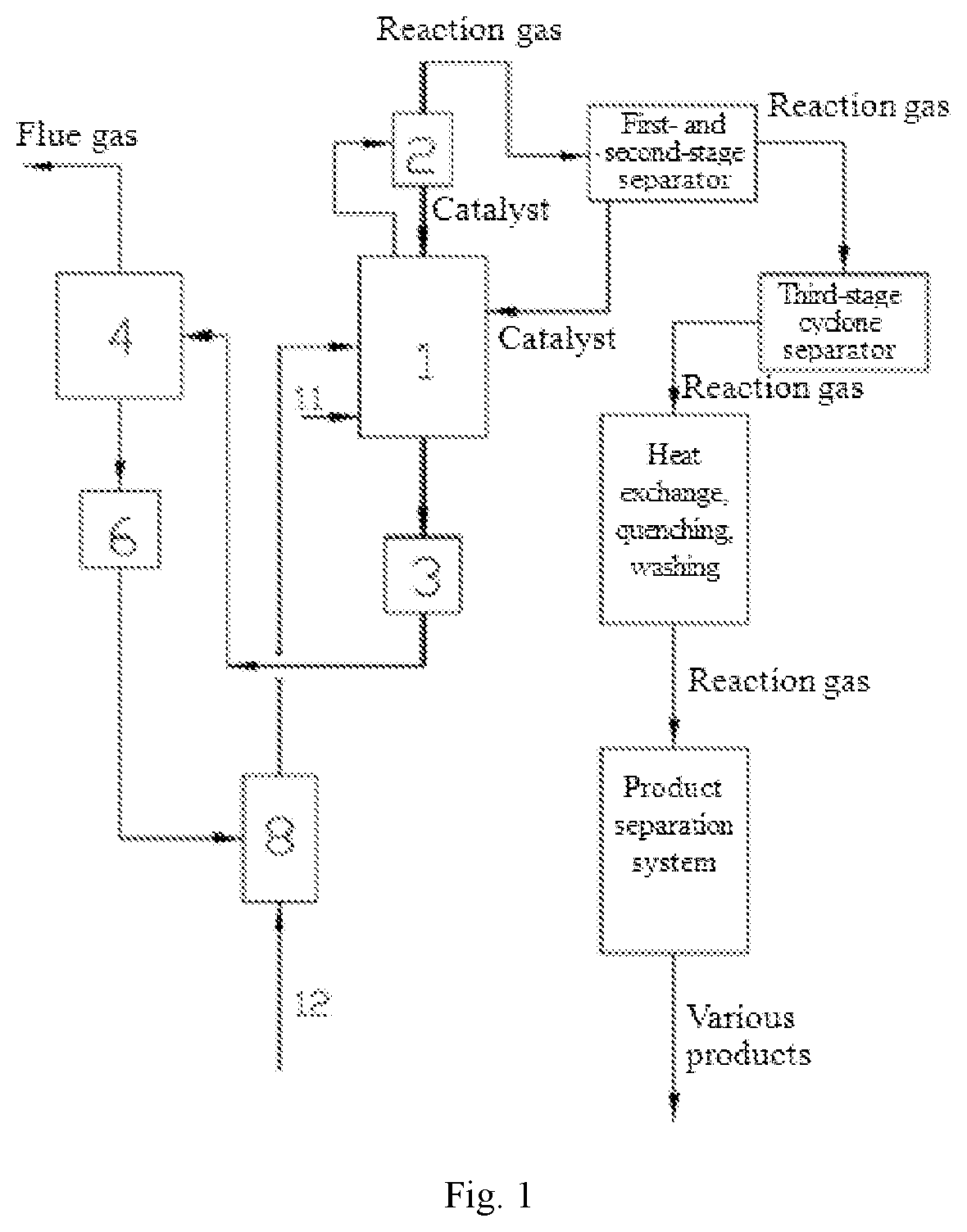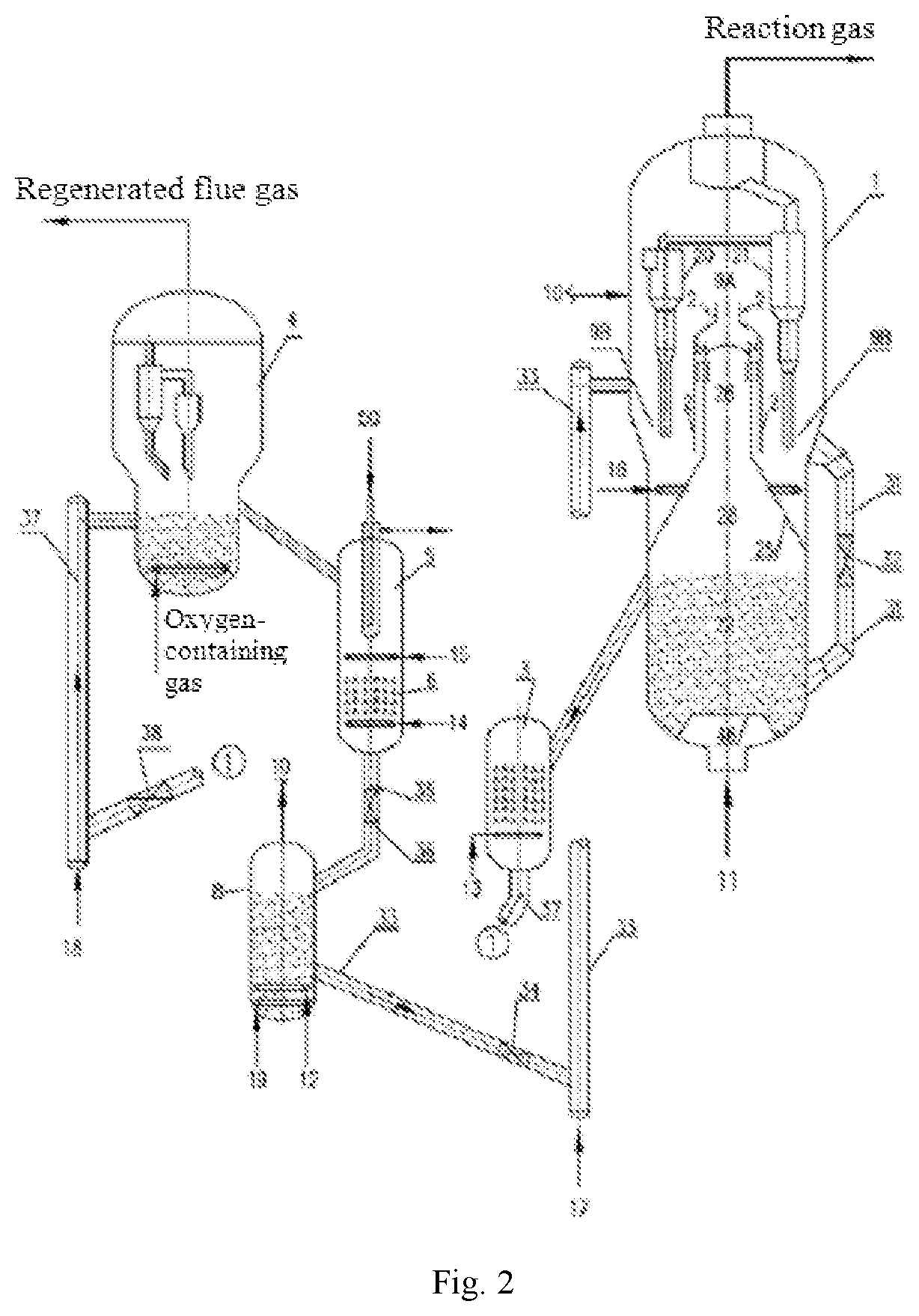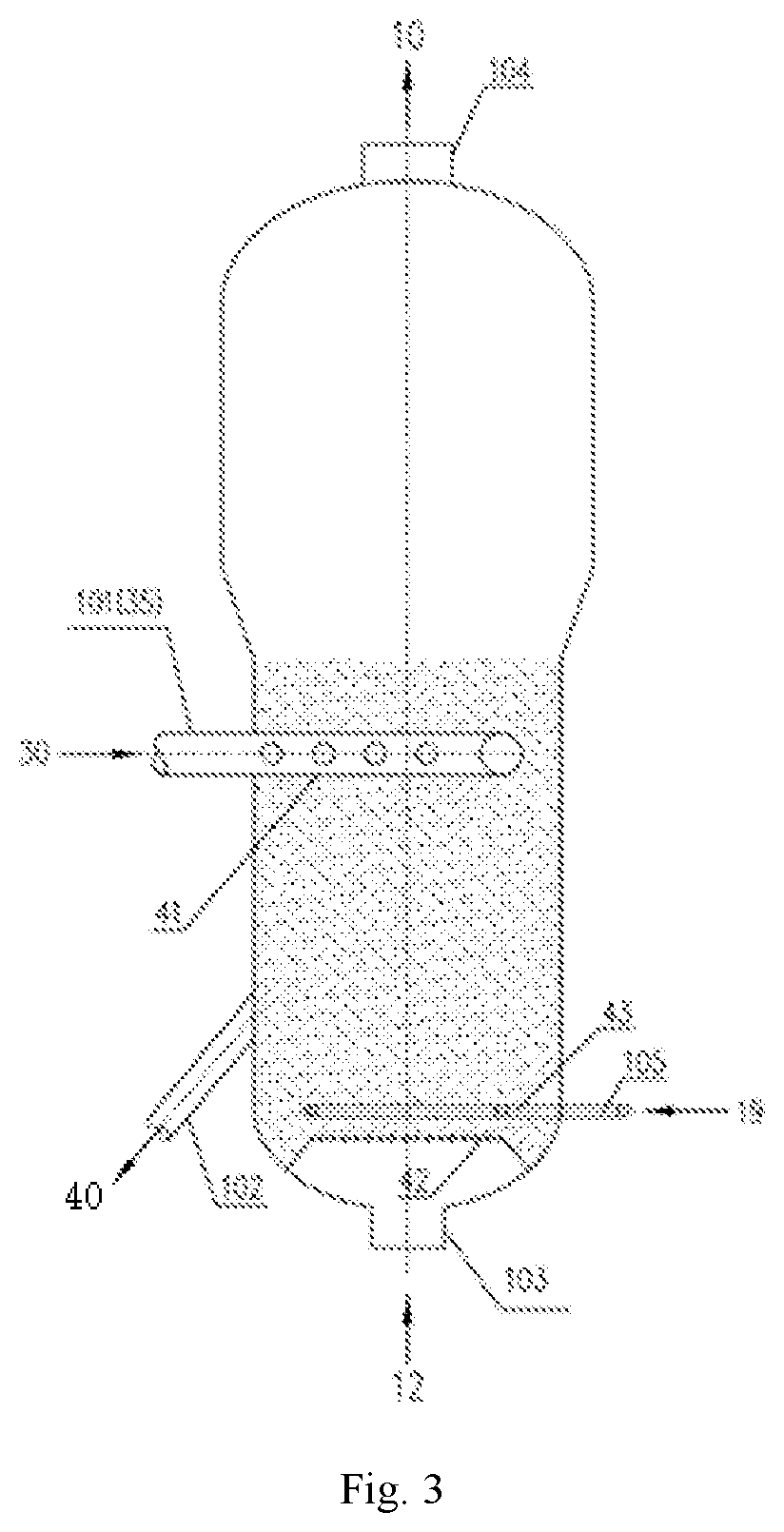Method and device thereof for improving selectivity of oxygenate conversion to low-carbon olefin
a technology of low-carbon olefin and selectivity, which is applied in the direction of hydrocarbon preparation catalysts, catalyst regeneration/reactivation, physical/chemical process catalysts, etc., can solve the problems of decreasing the selectivity of low-carbon olefins, increasing the cost of producing ethylene and propylene from petroleum resources, and uneven distribution of coke in the catalyst in the reactor
- Summary
- Abstract
- Description
- Claims
- Application Information
AI Technical Summary
Benefits of technology
Problems solved by technology
Method used
Image
Examples
example 1
[0105]In Example 1, methanol is used as the oxygenate raw material, and a process flow shown in FIG. 2 is adopted. SAPO-34 is used as the catalyst. The methanol conversion reactor and the regenerator are both operated under conventional conditions. A reaction gas is used as the activation medium. Main operating conditions of the pre-hydrocarbon pooling device are as follows: a superficial linear velocity of 0.1-0.2 m / s, a reaction temperature of 460° C., and contact time of 60-80 minutes.
[0106]Here, hydrocarbon pool active species on the regenerated catalyst after pre-hydrocarbon pooling are substantially recovered and a reasonable level of carbon deposition is formed. Simulation calculation results show that compared with the existing MTO technology, the present invention, with the addition of the pre-hydrocarbon pooling device of the present invention, improves the selectivity to low-carbon olefins (C2=+C3=) by 5.7 percentage points.
[0107]A comparison of main parameters and effect...
example 2
[0108]In Example 2, methanol is used as the oxygenate raw material, and a process flow shown in FIG. 2 is adopted. SAPO-34 is used as the catalyst. The methanol conversion reactor and the regenerator are both operated under conventional conditions. A reaction gas is used as the activation medium. Main operating conditions of the pre-hydrocarbon pooling device are as follows: a superficial linear velocity of 0.1-0.2 m / s, a reaction temperature of 460° C., and contact time of 30-40 minutes.
[0109]Simulation calculation results show that compared with the existing MTO technology, the present invention, with the addition of the pre-hydrocarbon pooling device of the present invention, improves the selectivity to low-carbon olefins (C2=+C3=) by 3.1 percentage points.
[0110]A comparison of main parameters and effects is shown in Table 2.
TABLE 2ParametersExisting MTO technologyPresent inventionTemperature of conversion reaction ° C.480480Temperature of regeneration ° C.680680Catalyst / methanol...
PUM
| Property | Measurement | Unit |
|---|---|---|
| Temperature | aaaaa | aaaaa |
| Temperature | aaaaa | aaaaa |
| Temperature | aaaaa | aaaaa |
Abstract
Description
Claims
Application Information
 Login to View More
Login to View More - R&D
- Intellectual Property
- Life Sciences
- Materials
- Tech Scout
- Unparalleled Data Quality
- Higher Quality Content
- 60% Fewer Hallucinations
Browse by: Latest US Patents, China's latest patents, Technical Efficacy Thesaurus, Application Domain, Technology Topic, Popular Technical Reports.
© 2025 PatSnap. All rights reserved.Legal|Privacy policy|Modern Slavery Act Transparency Statement|Sitemap|About US| Contact US: help@patsnap.com



